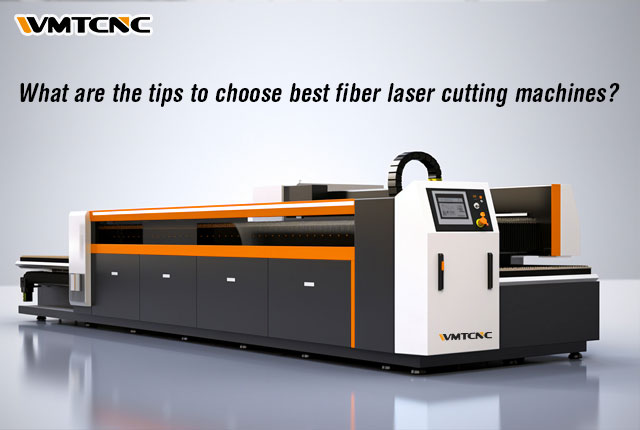WMT CNC Industrial Co., Ltd | All Rights Reserved.Design & Developed by VW Themes

When choosing the best fiber laser cutting machine, several essential factors must be considered. Here are some tips to help you make an informed decision:
Power and Cutting Capacity: Determine the power requirements and cutting capacity you need for your specific applications. Higher-power lasers generally offer faster cutting speeds and the ability to cut through thicker materials.
Laser Source Quality: Fiber lasers are known for their high beam quality, affecting the cuts’ precision and quality. Look for a laser cutting machine with a reputable and reliable laser source brand.
Machine Build Quality: Consider the machine’s overall build quality and durability. Look for a robust frame and components that can withstand the demands of continuous operation. This will ensure longevity and minimize downtime.
Cutting Speed and Acceleration: Check the machine’s cutting speed and acceleration capabilities. Faster cutting speeds and rapid acceleration rates can significantly improve productivity.
Cutting Accuracy and Precision: Precision is crucial in laser cutting, especially for intricate designs or fine details. Look for a machine that offers high cutting accuracy and repeatability.
Software and Control System: Evaluate the software and control system provided by the machine. A user-friendly interface and intuitive software can streamline your workflow and simplify operations.
Support and Service: Consider the reputation and support the manufacturer or supplier provides. Ensure they have a responsive customer service team and offer timely technical support and maintenance services.
Safety Features: Laser-cutting machines involve high-power lasers, so safety features are essential. Look for devices with safety interlocks, protective enclosures, and features like automatic shut-off in emergencies.
Cost and Return on Investment: Determine your budget and evaluate the machine’s cost features, capabilities, and expected return on investment. Consider the long-term benefits and potential savings regarding increased productivity and reduced operating costs.
Reviews and References: Research customer reviews and seek references from other users with experience with the machine you are considering. Their feedback can provide valuable insights into the machine’s performance and reliability.
By considering these tips and conducting thorough research, you can select the best fiber laser cutting machine that aligns with your needs and helps you achieve your cutting goals efficiently.
What are some common safety features that I should look for in a fiber laser cutting machine?
When choosing a fiber laser cutting machine, it’s crucial to prioritize safety. Here are some standard safety features to look for:
Protective Enclosure: The machine should have a fully enclosed working area to prevent direct exposure to the laser beam. This enclosure should be made of materials that can withstand the laser’s power and prevent the escape of laser radiation.
Safety Interlocks: Safety interlocks ensure the laser cutting machine cannot operate when the protective enclosure is open or compromised. These interlocks may include sensors or switches that turn off the laser when opening the compartment.
Emergency Stop Button: The machine should have a prominent and easily accessible emergency stop button to immediately halt all machine operations in an emergency or hazardous situation.
Laser Safety Class Compliance: Fiber laser cutting machines are assigned specific laser safety classes based on the power and wavelength of the laser source. Ensure the device meets the necessary safety standards and is classified appropriately for your application.
Beam Path Visibility: Some machines can observe the laser beam path through windows or camera systems without direct exposure. This allows operators to monitor the cutting process safely.
Integrated Cooling Systems: Fiber laser cutting machines generate heat; proper cooling systems are essential to maintain the optimal operating temperature. Look for appliances with integrated cooling systems that prevent overheating and ensure safe operation.
Fire Detection and Suppression: Fire detection systems like smoke or heat detectors can quickly identify potential fire hazards. Additionally, some machines may include fire suppression systems, such as automatic fire extinguishers or gas suppression systems, to mitigate fire risks.
Safety Training and Documentation: The manufacturer should provide comprehensive training materials and documentation outlining safe operating procedures, maintenance guidelines, and emergency protocols. Proper training for operators is essential to ensure safe and responsible use of the machine.
Compliance with Safety Standards: Ensure that the machine complies with relevant safety standards and regulations, such as those established by organizations like the Occupational Safety and Health Administration (OSHA) or the International Electrotechnical Commission (IEC).
Safety Labels and Signage: Clear and visible safety labels and signage should be on the machine to indicate potential hazards, provide operating instructions, and warn against unsafe practices.